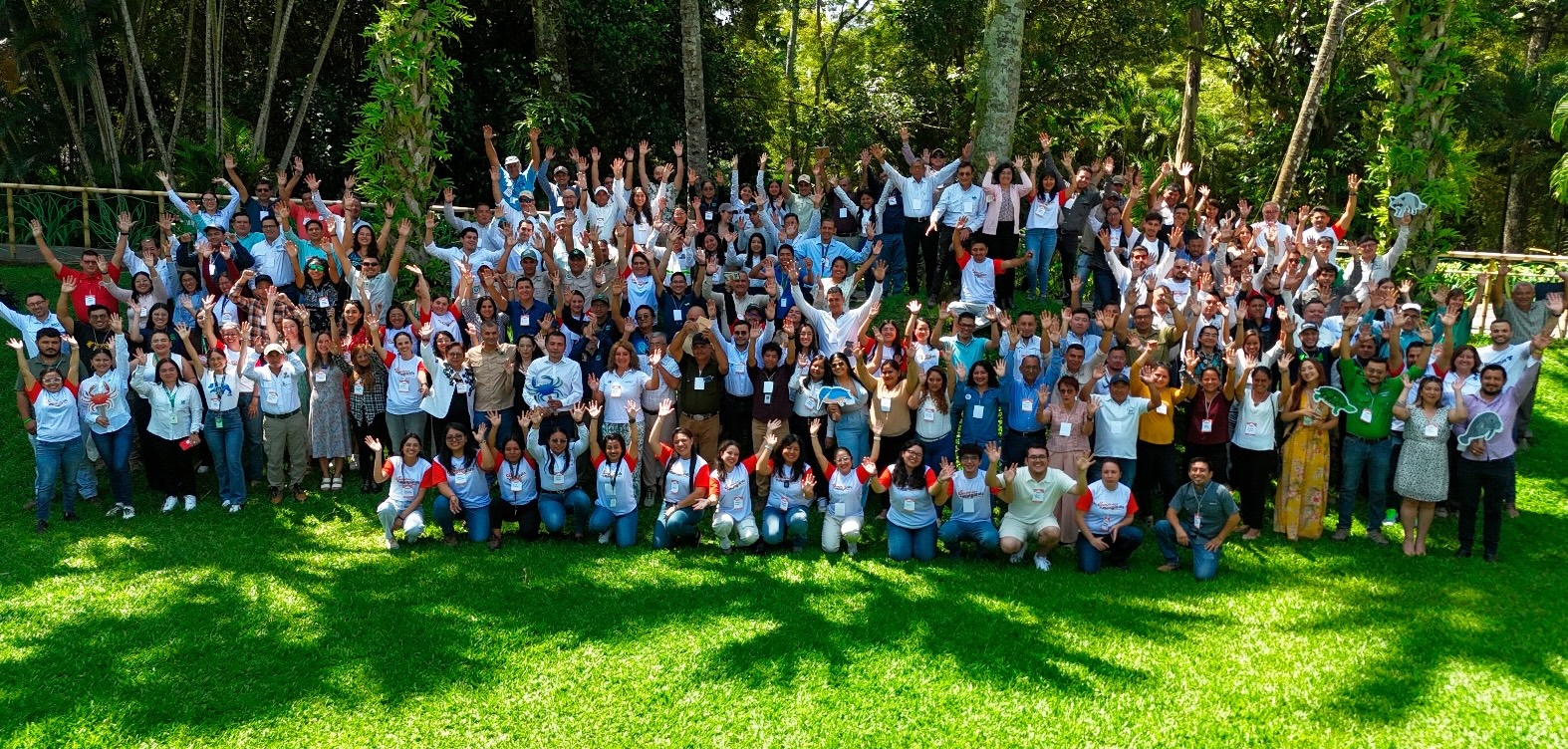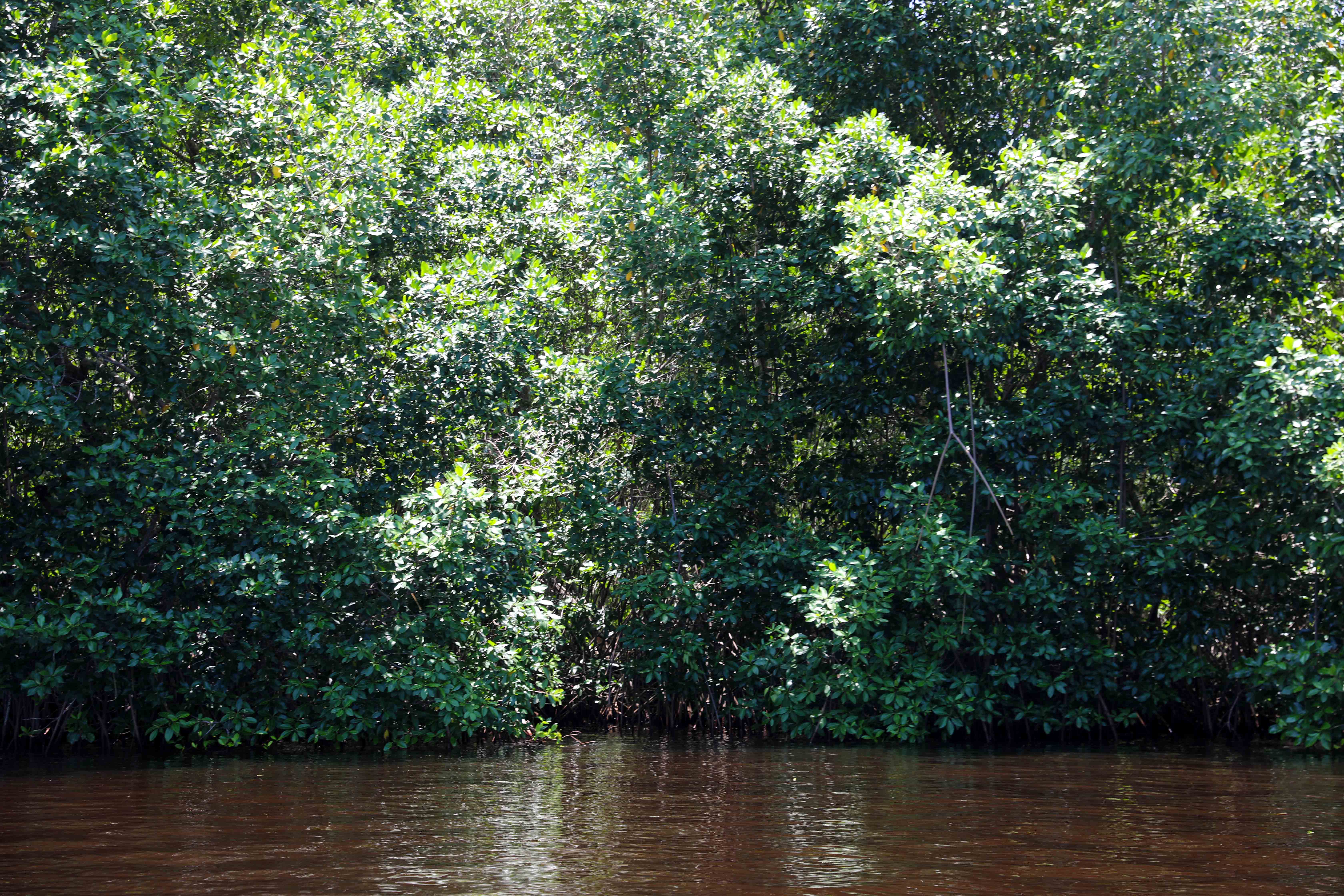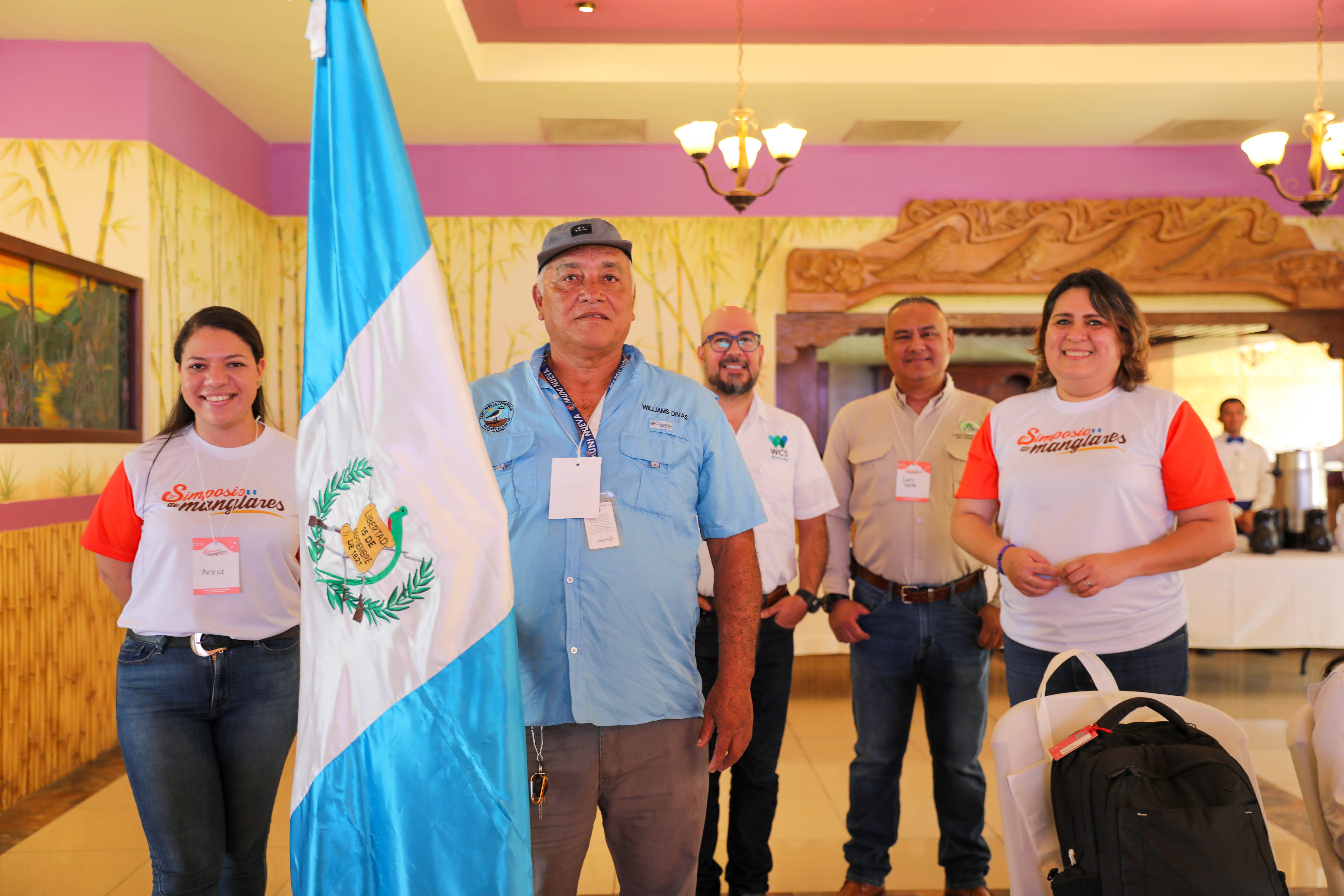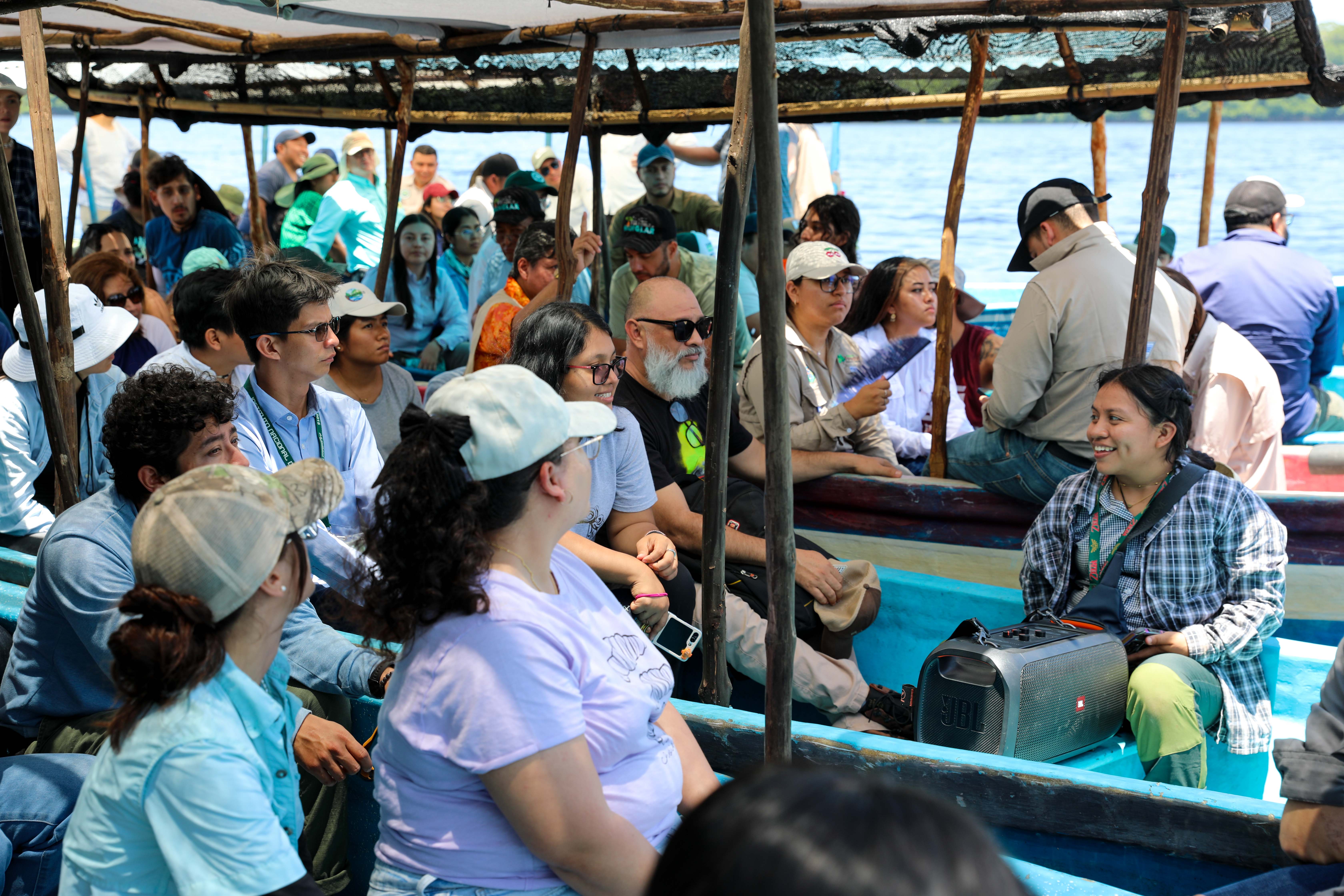From July 16 to 18, 2025, more than 200 participants gathered at IRTRA in San Miguel Zapotitlán, Retalhuleu, for the Third National Mangrove Symposium: "Connecting the Ecosystem for Sustainability." This technical-scientific event provided a platform to exchange experiences and strengthen capacities related to the conservation, restoration, and sustainable use of mangroves in Guatemala.
Six tree species native to the mangrove ecosystem have been identified in the country, all vital to the health of coastal areas. Four of these — red mangrove (Rhizophora mangle), black mangrove (Avicennia germinans), buttonwood (Conocarpus erectus), and white mangrove (Laguncularia racemosa) — are found along both the Pacific and Caribbean coasts of Guatemala.

Drone group photo by INAB Photo of mangrove by CONAP
Photo of mangrove by CONAP
The other two species have more limited distributions: Ixtaten mangrove (Avicennia bicolor), found mainly in Jutiapa, and a second red mangrove species (Rhizophora racemosa), located in Pacific departments such as Escuintla, Santa Rosa, and again Jutiapa. The presence and conservation of these species are key to maintaining the ecological function of Guatemala’s mangroves.
During the event, participants defined key strategies for protecting and restoring these ecosystems, which not only harbor threatened species but also provide critical services: acting as natural barriers against storms and hurricanes, and serving as breeding grounds for fish and crustaceans that sustain artisanal fishing and local economies.
The WCS Guatemala team contributed to the thematic sessions with three presentations focused on the link between communities and mangroves: one on artisanal fishing tied to Pacific mangrove ecosystems; another highlighting the role of community tourism guides as coastal conservation promoters; and a third on youth training programs that empower young people as local stewards protecting shorebirds and their habitats.
WCS representatives also joined the closing forum “Connecting Efforts for Mangroves: From Isolation to Coordination,” alongside members of the private sector, NGOs, academic institutions, communities, and local authorities. This space emphasized strategic alliances with the Environmental Management Units of the municipalities of Tiquisate and Nueva Concepción, aimed at promoting sustainable development along the coast.


The symposium featured keynote presentations, breakout sessions, and a field visit to the Manchón-Guamuchal Special Protection Area and Ramsar Site, one of the country’s most important wetlands and a key refuge for coastal biodiversity.
The event was organized by the National Forest Institute (INAB), the National Council of Protected Areas (CONAP), the Foundation for Ecodevelopment and Conservation (FUNDAECO), Rainforest Alliance, the Mesoamerican Reef Fund (MAR Fund), World Wildlife Fund (WWF), The Summit Foundation, the Private Institute for Climate Change Research (ICC), the Guatemala Marine-Coastal Intersectoral Alliance, Wildlife Conservation Society (WCS), Universidad de San Carlos de Guatemala, Universidad del Valle de Guatemala, Agroaceite, AgroAmérica, the Guatemalan Palm Growers Association (Grepalma), Grupo Hame, Magdalena, and El Ingrediente del Cambio.
Together for sustainable marine and coastal development in Guatemala.